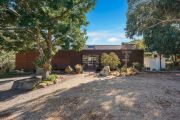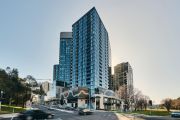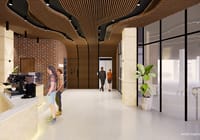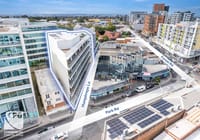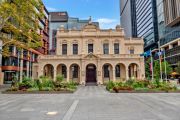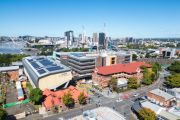
What’s the view at the top of a glitzy office tower really worth?
Companies are paying tall premiums for expansive views at the top of Sydney and Melbourne’s glistening high-rise office towers as they battle to attract stay-at-home staff.
Rents for floors in the upper echelons of Sydney’s top-tier towers with harbour views near Circular Quay are at 50-year highs, or about 60 per cent more expensive than setting up a workplace in the lower floors of the same buildings.

The difference between sky-high views and lower level floor space is even greater in Melbourne.
Collins Street’s trophy towers command a high-rise premium that diverges about 80 per cent from top to bottom, research from global commercial real estate agency CBRE shows.
“Office occupiers have consistently shown a desire, preference and ability to pay for the highest quality office space in Australia,” said lead researcher and associate director Thomas Biglands.
“The demand for the highest quality space is accelerating rent differentials across the stacking plan of office properties. High-rise floors with views are able to command significant rent premiums compared with their low-rise counterparts.”
The desire for views in the best buildings has tightened supply and raised rents, a trend that appears counterintuitive to the high office vacancy rates recorded in the Property Council of Australia’s last January survey for Sydney and Melbourne’s CBDs, which were at 12.8 and 18 per cent, respectively.
High citywide vacancy rates are a legacy of the pandemic, when leasing activity slowed and workers stayed at home. But after COVID, as economic activity picked up, the slump in rents encouraged many companies to negotiate new leases, moving up the property ladder into better digs in a better location.
‘Once you upgrade to a BMW, it’s very difficult to move back down to a Hyundai.’
Thomas Biglands, CBRE lead researcher and associate director
That has tightened supply in Sydney’s top end, translating into some of the strongest rent growth of any market globally over the past year for landlords who own premium office space, CBRE said.
Rents for the top floors in key buildings such as Chifley Tower, International Towers Barangaroo or Salesforce Tower average at about $2060 a square metre, while lower down you pay about $1200 a square metre.

Melbourne’s premium towers have always been historically cheaper to rent than those north of the border. In the southern capital, rents average at $1300 a square metre at the highest levels and $700 at the bottom of buildings such as 101 Collins or ASX-listed landlord GPT’s new tower at 51 Flinders Lane, which is signing tenants now.
Biglands likened climbing the corporate property ladder to buying a car. “Once you upgrade to a BMW, it’s very difficult to move back down to a Hyundai,” he said.
Landlords are using the opportunity to increase rents in premium towers and make up for losses they might have in some of their secondary assets.
There are two big reasons behind the change: attracting people back to the office, and a firm’s perceived status. “The first one – providing workers with the best or highest quality space – is a good way to do that [get staff into the office]. The second is that in white-collar industries, there’s a status to being in the best building with the best views,” Biglands said.
“Sydney has always, historically, been a market that’s been driven by views in the office space.”
The tight vacancy in top towers is unlikely to ease soon and will continue to place upward pressure on top-floor rents, with the rental spread between high-rise and low-rise spaces expected to widen further, potentially at an accelerating rate.
Chris Hanley, the agency’s head of office leasing, said rising rents at the top end were having a flow-on effect to leasing deals outside core city markets.
“Attractive rentals for non-core CBD office rents are influencing tenant lease decisions, and value is squarely on the agenda for many corporate occupiers,” Hanley said. “This has resulted in a growing proportion of deals landing in more cost-effective submarkets.”

